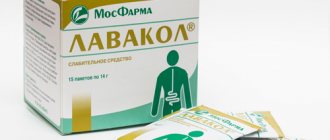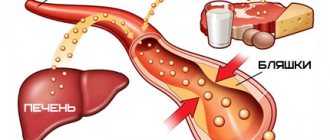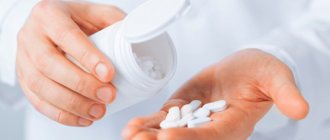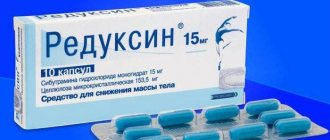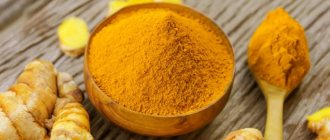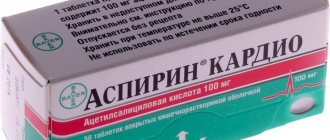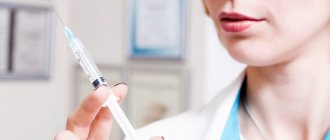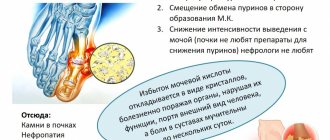Consequences of blood thickening
Normally, blood thickness varies throughout the day.
The highest rates are observed in the morning. Therefore, doctors do not advise, especially unprepared people, to engage in sports immediately after getting up. Among the pathological causes of blood thickening, the following should be highlighted:
- heart diseases;
- fluid deficiency;
- hormonal imbalance;
- diabetes;
- improper functioning of the spleen;
- lack of zinc, selenium, vitamin C or lecithin in the body;
- taking certain medications;
- poor nutrition.
Elementary non-compliance with the drinking regime can lead to quite unpleasant consequences for the human body. This fact is decisive in the natural physiological regulation of blood density indicators.
There are several serious pathologies that develop due to heme condensation:
- varicose veins;
- high risk of hypertensive crises;
- heart/brain infarction;
- atherosclerosis;
- thrombophlebitis.
The listed conditions often result in disability and even death.
The most common consequences:
- thrombus formation;
- hypoxia of tissues and organs;
- pathologies of the cardiovascular system;
- increased blood pressure;
- thromboembolism;
- thrombosis of deep veins of the lower extremities and joints.
Aspirin is an essential blood thinner. However, you should not use it on your own.
Help of drugs
The prescription of any medication should be carried out only by the attending physician after carrying out diagnostic measures. In addition, throughout the entire treatment period it is necessary to undergo regular tests to monitor your health.
It is important to remember that blood thinners are not blood clot preventers. They are not able to dissolve already formed clots
However, thanks to their properties, it is possible to reduce the viscosity of thick blood and prevent the development of thrombosis.
Which medicine to take and in what dosage is decided by a specialist in each case individually. In this case, it is necessary to take into account the patient’s age category, the severity of the condition and many other factors.
Contraindications for use
Instructions for the use of acetylsalicylic acid include a number of contraindications, compliance with which is mandatory during treatment with this drug.
Aspirin has its contraindications
Contraindications:
- the presence of an allergic reaction to any component of the drug;
- history of bronchial asthma, including that provoked by taking non-steroidal anti-inflammatory drugs;
- heart failure;
- vitamin K deficiency;
- age up to 16 years;
- severe renal or liver failure;
- diseases accompanied by internal bleeding;
- pregnancy and breastfeeding period.
Ignoring contraindications often leads to bleeding and other dangerous conditions, sometimes incompatible with the life of the patient.
Like any other drug, Aspirin has a number of contraindications for use. Among them, the following should be noted:
- age up to 12 years;
- hypersensitivity to the components of the drug;
- stomach ulcer;
- chronic disorders of the liver and kidneys;
- thrombocytopenia;
- breastfeeding period.
It is prescribed with caution for gout, since acetylsalicylic acid helps to delay the removal of uric acid from the body, as a result, the risk of an attack of the disease increases. The same cases include hypovitaminosis K and thyrotoxicosis
Absolute contraindications to taking acetylsalicylic acid:
- age up to 12 years;
- hypersensitivity to components;
- predisposition to the development of bleeding.
Relative:
- asthma;
- pathology of the stomach in a chronic form at the acute stage;
- liver and kidney failure;
- pregnancy period;
- hemophilia;
- the period of the preparatory stage for the operation;
- breast-feeding.
You need to take the medicine especially carefully when:
- hypovitaminosis K;
- thrombocytopenia;
- anemia;
- gout;
- simultaneous treatment with anticoagulants.
In pediatric practice, Ibuprofen is used instead of this drug.
Children under 12 years of age should not drink Aspirin, as taking the drug can contribute to the occurrence of Reye's syndrome, which can be fatal. For children, it is recommended to take medications such as Paracetamol or Ibuprofen instead of acetylsalicylic acid. The medicine can harm the body with gout and anemia, vitamin K deficiency and thyroid pathologies, low platelet counts and taking anticoagulants.
- gestation and lactation;
- stomach or intestinal ulcer;
- erosive gastritis;
- poor blood clotting;
- kidney pathologies;
- liver diseases;
- tendency to bleed;
- allergic reaction to the drug;
- hemophilia;
- asthma;
- aortic aneurysm.
Sometimes when treated with the drug, patients complain of tinnitus.
Taking the drug may cause adverse reactions. If you ignore them and continue to take the medicine, the condition may worsen significantly
When the first signs appear, it is important to avoid taking it and consult a specialist. Side effects may include:
- rash;
- weakness;
- bronchospasm;
- angioedema;
- noise in ears;
- anaphylactic shock;
- nausea;
- gagging;
- pain in the stomach;
- impaired functioning of the kidneys and liver;
- hemorrhagic syndrome;
- dizziness.
Side effects
Side effects of acetylsalicylic acid include:
- dyspeptic symptoms: nausea, cramps, epigastric discomfort, lack of appetite;
- noise in the ears and head, weakness, dizziness;
- allergic urticaria;
- in severe cases: Quincke's edema or anaphylactic shock.
Aspirin intoxication develops after exceeding the maximum dose. It manifests itself as increased side effects: hearing loss, dizziness, heartburn, dryness and an unpleasant taste in the mouth.
Indications and contraindications
Today, acetylsalicylic acid can be used for colds without fever, but only as prescribed by a physician. Also, additional indications for the use of this drug are:
- Systemic severe headaches and migraines.
- Pain caused by acute inflammatory processes in the body.
- Acute inflammatory diseases of the musculoskeletal system.
- Menstrual periodic pain in women.
- Severe toothache in adults.
- Pain that can occur as a result of a cold, including earache and sore throat.
- Increased body temperature in infectious diseases in adults.
In general, this medicine is in some way considered a universal analgesic, but it should be borne in mind that today new drugs are constantly appearing on the pharmacological market that do not have such a detrimental effect on the body and its systems.
Aspirin is often used to reduce body temperature during an infectious disease.
Thus, Aspirin should not be taken for ARVI and influenza in the following cases:
A person’s tendency to internal bleeding, as well as the presence of existing intestinal bleeding in the body. Individual intolerance by the patient to the active substances of this medication, as well as increased sensitivity to NSAID drugs. In this condition, the patient is recommended to be prescribed safer medications that can eliminate the high fever and soreness that often occur with a cold. Simultaneous treatment with other potent drugs. The presence of bronchial asthma in a person. Severe chronic diseases Among them, it is important to note diabetes mellitus, which literally “hits” all systems in the human body. In this condition, taking the medicine is strictly contraindicated. Due to the very high risk of developing Reye's syndrome, as well as the deterioration of the body's systems, Aspirin is not used to treat colds and flu in children under the age of fifteen. Thus, to relieve fever and pain in children under this age, it is much safer to use traditional antipyretic drugs such as Paracetamol, Ibuprofen or Nurofen
They are well tolerated and rarely cause side effects. This medicine should be used with caution and only as prescribed by a doctor for people suffering from chronic liver and chronic renal failure. The drug should be prescribed with caution to elderly patients. Acute diseases of the digestive system, as well as chronic pathologies during exacerbation. It is especially dangerous to take this medicine if you have a stomach ulcer. The period after recently undergoing complex operations on blood vessels and the heart.
Indications and doses
Acetylsalicylic acid is prescribed for the following pathologies:
- febrile symptoms of inflammatory and infectious diseases;
- mild and moderate pain syndromes of various origins: migraine, neuralgic manifestations, myalgia;
- rheumatic joint damage;
- risk of thrombosis and thromboembolism;
- the risk of development and consequences of myocardial infarction;
- acute ischemic stroke;
- in complex therapy: alcohol withdrawal syndrome.
The recommended dose of the drug depends on the type and severity of the disease:
- for high fever, ARVI, pain - 100–500 mg three times a day;
- for intense fever - up to 1.5 g per day;
- for rheumatoid polyarthritis, other joint inflammations, myocardial diseases - up to 4 g daily.
Acetylsalicylic acid should be taken after meals. It is recommended to grind the non-coated tablets into powder and wash them down with plenty of warm water. You can use a slightly alkaline mineral one. The effervescent drug must first be dissolved in 50–60 ml of liquid. In liquid form, acetylsalicylic acid is absorbed faster into the blood and has less contact with the gastric mucosa.
Description and composition of the drug - does acetylsalicylic acid help with colds?
Every person had to take Acetylsalicylic acid during a cold. This popular use of the drug for ARVI, flu and colds is due to its properties. Aspirin perfectly lowers body temperature and eliminates headaches, joint and muscle pain and relieves inflammation.
Price from 10 rub.
After the discovery at the very beginning of the use of Acetylsalicylic acid, it was noted that the drug is better than others for the treatment of colds. Aspirin actively affects the human thermoregulation center, increasing the process of sweating. Thus, the medicine in a gentle manner relieves fever. Due to its accelerated effect on foci of inflammation, the drug alleviates the patient’s condition in a short time. Find out what to do for a cold at home here.
One of the particularly important properties of Acetylsalicylic acid in viral diseases is the production of interferons by stimulating the human immune system.
Instructions for using aspirin - how to take tablets for fever and headache
The main rule for taking Aspirin is to take it after meals. It is imperative to take the drug with a glass of water, or preferably milk. Thus, the active substance dissolves faster without having a negative effect on the gastric mucosa. Aspirin in powder form, like all powders, must be diluted in a glass of warm water, and effervescent tablets must be dissolved in water at room temperature. Effervescent tablets should not be taken undissolved. Read more about cold powders here.
If cold symptoms do not go away when using Aspirin within three days, you should consult a specialist. Most likely, the disease is complicated and requires the use of antibiotics.
New data on the role of acetylsalicylic acid in the treatment of COVID-19
On June 15, during “Scientific Tuesday,” the head of the department of fundamental and clinical problems of thrombosis in non-infectious diseases of the Federal State Budgetary Institution “National Medical Research Center for Traumatology and Medicine” of the Ministry of Health of Russia, Doctor of Medical Sciences. Igor Semenovich Yavelov presented data from randomized clinical trials on the use of acetylsalicylic acid in the drug therapy of COVID -19.
It has been proven that thrombus formation processes play a significant role in the progression of the new coronavirus infection. Currently, subcutaneous or intravenous administration of heparin drugs is widely used in the hospital for the treatment of COVID-19. However, evidence is accumulating that drugs that reduce the functional activity of platelets (antiplatelet agents) may also be useful, among which acetylsalicylic acid is most often used.
Thus, according to a pooled analysis of 6 retrospective studies, which included a total of 13,993 patients with COVID-19, the use of a low dose of acetylsalicylic acid prehospital or in the hospital indicated a twofold reduction in the risk of death when compared with those who did not receive this antiplatelet agent, regardless of the presence of other factors, associated with an unfavorable outcome of the disease. The results of the analysis of cases of initiation of acetylsalicylic acid use in a hospital were similar. At the same time, on the one hand, such a pronounced positive effect looks implausible, on the other hand, it is known that evidence of this kind can be misleading, since the decision to prescribe or not prescribe a drug to a particular patient depends on the decision of the doctor, whose motives are not always known , and there is never any certainty that the comparison groups were similar (comparable) in all features that could influence the outcome of treatment. Only randomized clinical trials can give a definite answer to the appropriateness of a particular approach to treating patients.
The results of the first of them were disappointing: in the multicenter open clinical trial RECOVERY, the administration of acetylsalicylic acid at a dose of 150 mg 1 time per day before discharge in patients hospitalized with COVID-19 had no effect on mortality over 28 days of observation compared with standard treatment of the disease. without the use of acetylsalicylic acid. However, there was no benefit when starting treatment within the first 7 days and later from the onset of symptoms, in the absence of the need for respiratory support/oxygen breathing and various forms of respiratory support, with or without the use of corticosteroids. There were no differences between groups in the frequency of patients requiring non-invasive and invasive pulmonary ventilation or renal replacement therapy. In general, the study began in the first days after hospitalization, and initially the severity of the disease was not critical (mechanical artificial ventilation was performed in only 5% of patients).
As a result, there is no reason yet to use acetylsalicylic acid in all patients hospitalized with COVID-19. Its study in this disease (including outpatient treatment) continues in a number of randomized clinical trials. Accordingly, it is possible that after new facts emerge, ideas about the role of acetylsalicylic acid in COVID-19 will be clarified or revised.
Aspirin and paracetamol - can they be taken at the same time (compatibility)
Antipyretic drugs are used to reduce body temperature. Sometimes one substance is not enough, and doctors resort to a combination of several drugs. Let's look at Aspirin and Paracetamol, their intracellular effects, indications and contraindications.
Antipyretic drugs are used to reduce body temperature. Sometimes one substance is not enough, and doctors resort to a combination of Aspirin and Paracetamol.
Action of Aspirin
Aspirin is a medicine from the German manufacturer Bayer. The drug belongs to the group of non-steroidal anti-inflammatory drugs. The active ingredient - acetylsalicylic acid - has a wide spectrum of action:
- relieves inflammation of cervical osteochondrosis, arthritis, arthrosis and other diseases of osteochondral tissue;
- reduces discomfort during menstrual, toothache or headache;
- lowers body temperature;
- thins the blood, improves circulation.
The drug is widely used in all branches of medicine. It is available in tablet form, but there are many analogues in other dosage forms that are used for fever, inflammation, pain or diseases of the cardiovascular system.
Action of Paracetamol
The drug is based on the component of the same name, paracetamol. This is a powerful remedy used to lower fever and reduce pain during fever, injuries and other pathological processes in the body.
Paracetamol is a powerful remedy used to reduce fever and reduce pain during fever, injuries and other pathological processes in the body.
Paracetamol, when absorbed, affects the brain center responsible for the perception of pain. In addition, the drug molecules affect the synthesis of prostaglandins, which are responsible for raising the temperature, due to which the drug quickly relieves even severe fever.
The drug does not treat fever, colds, flu and other infectious diseases, and also does not have antiviral or antibacterial effects, so it is not advisable to take it for treatment.
What is better and what is the difference between Aspirin and Paracetamol
The action of both drugs is slightly similar, but the difference is that Paracetamol is aimed at reducing body temperature, and Aspirin is aimed at reducing pain.
Is it possible to take Aspirin and Paracetamol at the same time?
It was previously believed that taking these 2 drugs together helps to quickly reduce high fever. This is true, but in addition to the benefits, the combination of drugs has many side effects that negatively affect the functioning of the liver, kidneys and gastrointestinal tract. Therefore, doctors use this combination only in cases of extreme necessity.
Indications for simultaneous use
High body temperature and severe fever caused by infectious diseases. With one-time use, you should not be afraid of side effects, because... they appear only when accumulated in the process of systematic intake.
How to take Aspirin and Paracetamol together
For emergency relief of fever, the drugs are most often used in the form of a solution for intramuscular administration.
In medicine, there is the concept of “triplet” - this is a combination of 3 drugs, when used, the effect occurs immediately and has a prolonged effect.
In addition to Aspirin and Paracetamol, Analgin or No-Shpa is used to relieve vascular spasms. The dosage is determined individually, the standard is 2 mg of each drug.
Contraindications
- hypersensitivity to the components of the composition;
- aspirin asthma;
- not for kidney and liver diseases;
- gastrointestinal pathologies.
Side effects
Side effects appear only with long-term use:
- nausea, vomiting, digestive disorders;
- renal and liver failure;
- disorders of the hematopoietic organs;
- allergic reactions, which are manifested by itching, hives and rash.
Acetylsalicylic acid and respiratory tract pathology
For many decades, acetylsalicylic acid (ASA) has been one of the most commonly used over-the-counter medications. The medicinal properties of salicin glycoside, contained in willow bark (Salix alba) and used to relieve pain, have been described in ancient times. In 1859, professor of chemistry H. Kolbe discovered the chemical structure of salicylic acid, and in 1875 sodium salicylate was created, first used to treat rheumatic pain and as an antipyretic. However, the clear therapeutic effect of sodium salicylate was combined with severe side effects in the gastrointestinal tract. On August 10, 1897, the German pharmacist F. Hoffman, working in the Bayer laboratory, successfully synthesized acetylsalicylic acid (ASA), which did not have significant side effects, by acetylation of the phenolic hydroxyl group of salicylic acid. In March 1899, this compound was named aspirin, and its widespread use in medical practice began [1]. Just a few years after the creation of aspirin, in 1902, D. Hirschberg from Poland described the first case of a hypersensitivity reaction to aspirin, which manifested itself as severe breathing problems and facial swelling. The association between aspirin hypersensitivity, asthma and nasal polyposis was described by M. Widal et al. in 1922, and in 1968, as experience in the use of aspirin accumulated, M. Samter, R. Beers identified the “aspirin triad” syndrome (a combination of asthma, rhinosinusitis (usually polypous) and ASA intolerance), manifested by attacks of suffocation, and also nasal blockage and rhinorrhea. Subsequently, it was shown that other NSAIDs can cause similar clinical manifestations [2]. Currently, the term “aspirin-induced respiratory disease” (AERD) is generally accepted, and relatively recently the concept of “NSAIDs-exacerbated respiratory disease” (NSAIDs-exacerbated respiratory disease) has been proposed in the literature. NERD)), which determines not only the pathogenetic relationship of damage to the respiratory system, but also identifies other NSAIDs as a trigger for the development of this disease. NERD syndrome is referred to as a hypersensitivity reaction induced by ASA and other NSAIDs, manifested by bronchial obstruction, shortness of breath, nasal blockage and/or rhinorrhea and occurring in patients with chronic airway disease (RD) (asthma/rhinosinusitis/nasal polyposis) [2, 3] . Epidemiology
The true incidence of hypersensitivity to ASA and other NSAIDs remains unknown. According to various authors, it is detected in 0.5–1.9% of the population in the general population and much more often among patients suffering from asthma – in 4.3–11%, and when conducting diagnostic provocative tests (PT) among this category of patients reaches 21–25% [1, 4]. Among patients with PRS, 14–22% have hypersensitivity to ASA, and more than 25% with a combination of asthma and PRS [5]. AIRD is extremely rarely diagnosed in children. It is believed that this disease affects middle-aged people (the onset of the disease is 20–40 years), mainly women (in a ratio of 2:1) [6].
Pathogenesis of AIRD
The mechanism of development of the disease is not completely clear. Despite the fact that the clinical manifestations of the disease are similar to those of immediate reactions, attempts to identify antibodies to aspirin and other NSAIDs have not been successful. In 1971, J. Vane discovered the mechanism of action of ASA, which suggested that AIRD is based on a genetically determined disorder of arachidonic acid metabolism. It is known that arachidonic acid is a product of the transformation of cell membrane phospholipids under the influence of the enzyme phospholipase A2 (Fig. 1). The transformation of arachidonic acid can proceed in two ways: through the cyclooxygenase pathway with the formation of prostaglandins E2 and F2, prostacyclin and thromboxane, or through the lipoxygenase pathway with the formation of highly active substances - peptide leukotrienes containing cystenes in their structure (cis-LT). Aspirin and other non-selective NSAIDs are known to inhibit cyclooxygenase (COX), leading to an alternative breakdown pathway, lipoxygenase. It is known that there are 2 types of cyclooxygenases - types 1 and 2. COX-1 is produced under physiological conditions and regulates the formation of prostanoids in the body. The production of COX-2 is largely induced by the process of inflammation. In recent years, COX-3 has been identified and found in the central nervous system [7]. Most NSAIDs have anti-inflammatory, analgesic and antipyretic effects, the mechanism of which is associated with an inhibitory effect on COX, which leads to a rapid decrease in the products of arachidonic acid conversion. At the same time, it has been shown that prostanoids, in particular PGE2, have an immunomodulatory, antifibrotic and bronchodilator effect on DP [8]. The conversion of arachidonic acid through the lipoxygenase pathway leads to the formation of sequentially LTA4, and then cis-LT (LTS4, LTD4, LTE4). Cis-LTs are produced by eosinophils, basophils, macrophages, and, to a lesser extent, by T lymphocytes and epithelial cells. The effects of cis-LT on DP are very diverse and are associated with an effect on the vascular bed (which is accompanied by dilation of microvessels and an increase in their permeability), as well as with a bronchospasmogenic effect (Fig. 2). The occurrence of edema of the mucous membrane of the DP, attraction of leukocytes and eosinophils to the site of inflammation, increased secretion of mucus and worsening of its evacuation lead to the emergence of the main clinical symptoms of damage to the upper and lower DP. The biological effects of cis-RT determine the eosinophilic infiltration of the upper and lower DP. It has also been noted that cis-LTs play an important role in the remodeling process in patients with AD and PRS [9].
The effects of cis-LT are carried out with the participation of specific receptors coupled with G-protein and found in the smooth muscles of the bronchi, eosinophils, basophils, mast cells, macrophages, T- and B-lymphocytes, as well as in the epithelium of the nasal mucosa (PN). The clinical effects of type 1 cis-LT stimulation include bronchospasm, hyperreactivity, increased mucus secretion, determine the occurrence of difficulty in nasal breathing, the appearance of rhinorrhea and paroxysmal sneezing (Fig. 1). In recent years, the role of chronic viral and staphylococcal (St. aureus) infections in damage to the epithelium of the DP and the formation of a special immune response, which leads to the development of nasal polyposis and chronic persistent inflammation in the lower DP, has been actively discussed [10, 11].
Clinical manifestations of AIRD
Rhinorrhea and almost constant nasal congestion are the first symptoms of the disease. Nasal manifestations are year-round in nature, refractory to pharmacotherapy, the patient’s condition clearly worsens after taking ASA and other NSAIDs. Over time, patients develop anosmia, a chronic PRS requiring repeated surgical interventions. CT scanning of the paranasal sinuses (NSS) reveals total damage to the sinuses by polypous tissue [10]. Aspirin-induced asthma (AAA) is characterized by a severe persistent course with the need to use systemic glucocorticosteroids (GCS) to achieve BA control. Frequent exacerbations of the disease are observed, mainly associated with viral and bacterial infections; they are severe; cases of life-threatening complications during exacerbations of the disease are described. Despite basic anti-inflammatory therapy, an irreversible component of bronchial obstruction quickly forms in patients with AAA. Thus, a feature of the clinical course of AIRD is a severe, poorly controlled course of rhinosinusitis and asthma, despite adequate anti-inflammatory therapy [1, 6]. Clinical manifestations of hypersensitivity to ASA and other NSAIDs can develop within 20–120 minutes after taking the drug: severe nasal congestion, rhinorrhea, difficulty breathing, rapid increase in bronchial obstruction and the development of a life-threatening condition. Aspirin-induced bronchospasm is a common cause of status asthmaticus requiring emergency resuscitation. In addition to symptoms of DP damage, patients may experience urticaria, widespread swelling of the face and neck, abdominal pain, and symptoms of gastric dyspepsia [4, 12]. In addition to medications, many foods containing natural salicylates can provoke clinical symptoms of AIDS. There are foods with a high content of salicylates (apples, cherries, strawberries), medium (apricots, nectarines, melon, tomatoes), low (lemons, bananas, broccoli, garlic) [4].
Diagnostics
The diagnosis of AIRD can be almost reliably made based on the clinical picture and medical history [1, 4]: – a history of exacerbation of asthma after taking aspirin and/or other NSAIDs; – chronic rhinosinusitis, refractory to drug therapy in the absence of specific IgE; – PRS; – total darkening of the SNP on CT. In recent years, there has been an increase in the number of studies devoted to the study of biomarkers in AIRD, which should make it possible to confirm the diagnosis in laboratory conditions. Particular attention is paid to studying the level of prostaglandins in the blood, LTA4 in the urine and 15-HETE (hydroxyeicosatrienoic acid) in peripheral blood leukocytes [8, 11]. Taking into account the severe clinical manifestations of hypersensitivity to ASA and other NSAIDs in patients suffering from asthma and PRS, the severe, treatment-refractory course of both diseases individually and their combination, as well as, if necessary (for health reasons), the use of aspirin in this category of patients is justified. carrying out PT. It should be noted that some patients with asthma and PRS have a latent course of hypersensitivity syndrome to ASA and NSAIDs. Thus, conducted by A. Szezeklik et al. a study of hypersensitivity to ASA using PT in patients with asthma found a positive reaction in 18% of patients, which indicated a hidden hypersensitivity syndrome and dangerous underdiagnosis of this condition [13]. Currently, the following PTs are used in diagnosis (conducted only in certified hospitals with intensive care units): oral test with ASA, intranasal and inhalation tests with lysine-aspirin [3, 4]. All tests are single-blind, placebo-controlled, and are carried out when the patient is in a stable condition and is closely monitored. Contraindications to PT are: a history of anaphylactic reactions to NSAIDs, severe heart, kidney and gastrointestinal diseases, autoimmune diseases. At the same time, drug therapy for asthma and PRS, in particular corticosteroids and LT receptor antagonists, can significantly change the results of PT, therefore, if it is impossible to cancel them, the dose is reduced to the minimum effective. There are various options for oral PT. More often it is carried out over 2 days. On the 1st day, the forced expiratory volume in 1 s (FEV1) is examined; the best indicators should be >70% of the required values. At intervals of 1.5–2 hours, the patient sequentially takes 3 capsules (placebo), and FEV1 is examined every 30 minutes. If the indicators decrease by more than 15% from the initial value, then the patient’s condition is regarded as unstable and the test is not performed. If the patient’s condition is stable in the morning of the 2nd day with an FEV1 > 70% of the predicted value, the patient is sequentially prescribed in increasing doses of ASA (for example, 27, 44, 117, 312 mg) with an interval of 1.5–2 hours up to a total dose of 500 mg. Every 30 minutes, FEV1, signs of bronchial obstruction, the appearance of rhinorrhea, nasal congestion and other manifestations of hypersensitivity are assessed. The test is positive when FEV1 falls > 20% and severe extrabronchial clinical symptoms (rhinorrhea, acute nasal congestion) appear, even in the absence of changes in FEV1. The sensitivity of this PT is 89%, specificity is 93%. Inhaled PT has less sensitivity, but greater safety compared to oral PT and is performed if hypersensitivity to ASA is suspected, mainly in patients with PRS without BA. If there are contraindications to oral and inhalation PT, nasal PT is used for diagnosis. The placebo-treated patient is observed every 10 minutes for 30 minutes for clinical symptoms, acoustic and active anterior rhinomanometry, or peak nasal inspiratory flow. If there is no reaction, 80 μl of a lysine-aspirin solution is injected into each half of the nose and the reaction is assessed every 10 minutes for 2 hours (if there are changes, within 3 hours). A positive result is considered when clinical symptoms appear, a decrease of ≥25% in total nasal flow, or a 40% drop in inspiratory nasal flow [4].
Treatment
An integrated approach to the management of patients with AIRD, taking into account the common pathogenetic mechanisms of damage to the upper and lower airways, is the only possible way to achieve a stable course of the disease. The main directions of treatment are: – patient education to exclude the possibility of using aspirin, other NSAIDs, as well as the use of combination drugs containing NSAIDs for concomitant diseases; – compliance with dietary recommendations with the exception of natural salicylates and canned factory-produced products; – pharmacotherapy; – if necessary, surgical treatment of PRS; – desensitization with aspirin. If it is necessary to prescribe NSAIDs for concomitant diseases, selective COX-2 inhibitors - coxibs (celecoxib, etoricoxib, etc.) are used with caution. Prescribing paracetamol in doses of no more than 1000 mg/day is safe in 90% of patients with AIRD. In recent years, it has been suggested that the analgesic and antipyretic effects of paracetamol are associated with its inhibitory effect on COX-3 in the central nervous system, where prostaglandin synthesis decreases. However, in severe cases of asthma, paracetamol should be used with caution and in cases of extreme necessity [7, 11]. Drug therapy is based on the pathogenetic mechanisms of disease development and is carried out in accordance with the recommendations for the treatment and prevention of asthma by the Global Initiative for Asthma (GINA) [11] and the recommendations for the treatment of rhinosinusitis European Position Paper on Rhinosinusitus and. Nasal Polyps (EPOS) [14]. The main anti-inflammatory drugs are undoubtedly corticosteroids for endobronchial and intranasal use. In cases of severe and poorly controlled disease, it is possible to use the systemic route of administration of GCS. Leukotriene receptor antagonists have been successfully used as drugs for additional anti-inflammatory therapy, which have shown to be highly effective against combined damage to the DP in patients with AIRD. In severe cases of PRS, complete absence of nasal breathing, especially in patients with asthma, it is justified to prescribe systemic corticosteroids in a short course - “medical polypotomy”, which is sometimes an alternative to surgical intervention. It is advisable to use prednisolone orally at a rate of 0.5–1 mg/kg/day. The course of treatment is 10–14 days. It is advisable to take prednisolone according to the following scheme: 2/3 doses are taken in the morning after breakfast, 1/3 - after lunch. From the 8th–10th day, the dose of the drug is gradually reduced (by 5 mg daily) until complete withdrawal. This course of treatment is used no more than 2 times a year in case of insufficient effectiveness of therapy with intranasal corticosteroids, early relapse of the polyposis process, or in the presence of contraindications to surgical treatment of PRS [15, 16]. The conservative method of treating PRS is preferable in the management of patients with concomitant AAA, however, it is not always possible to achieve restoration of nasal breathing during drug therapy. The absolute indications for surgical intervention are: the presence of obstructing polyps when previously conservative therapy has been ineffective; polyposis-purulent lesion of the PN, as well as significant anomalies in the structure of the anatomical structures of the PN, which sharply complicate nasal breathing. The possibility of surgical intervention, as well as the tactics of preoperative preparation, should be determined jointly by pulmonologists and otorhinolaryngologists. Contraindications to surgical treatment of PRS are exacerbation of AAA, the period of flowering of plants and the next 1–2 months. if the patient has allergic reactions to pollen [12]. Endoscopic surgical methods for the treatment of PRS have an obvious advantage over traditional surgical interventions: nasal polypotomy and radical surgery on the SNP. Undoubtedly, this type of surgical intervention is the most gentle, which is especially important in patients with concomitant asthma [14]. The presence of a rhinobronchial reflex in patients with asthma determines the possibility of developing severe exacerbation of asthma during surgery and in the early postoperative period. In this regard, a short course of systemic GCS therapy is mandatory. Treatment begins 3 days before surgery and continues for at least 3 days after surgery according to the following regimen: prednisolone orally at the rate of 0.5–1 mg/kg/day for 6 days or dexamethasone IV drip 8–12 mg per 200 ml of physiological solution 2 times a day for 6 days [15]. Taking into account the frequent relapses of PRS, anti-relapse therapy with the use of intranasal corticosteroids, antihistamines, and leukotriene receptor antagonists is mandatory after surgical restoration of nasal breathing [15, 17].
Desensitization of ASA
In recent years, the method of desensitization of ASA has been actively studied and effectively used in AIRD. Treatment is based on a gradual increase in the dose of ASA, which creates unresponsiveness to the effects, which persists during drug administration and for several days after its discontinuation. Treatment can only be started in a hospital that is certified to use this treatment method and has an emergency department (taking into account the high risk of side effects). There are no generally accepted regimens for desensitization and maintenance doses of ASA. The following treatment regimen is preferably used: for 2–5 days, the dose of oral aspirin reaches 325–650 mg/day with good tolerance. Some studies have shown that a maintenance dose of 1300 mg/day, divided into 2 doses, is effective [5, 18, 19]. It should be noted that ASA desensitization can be considered for the treatment of AIRD when optimal anti-inflammatory drug therapy regimens are used and the effect is not achieved or when it is necessary to use ASA and other non-selective COX inhibitors for concomitant diseases. Indications for ASA desensitization are: – severe asthma in combination with PRS, which cannot be controlled by using adequate doses of topical steroids and LT receptor antagonists; – severe PRS, requiring repeated surgical interventions, despite therapy with topical steroids and LT receptor antagonists; – constant use or frequent repeated courses of systemic corticosteroids to control symptoms of asthma and PRS; – concomitant diseases, in particular cardiovascular and rheumatic diseases, the treatment of which requires the mandatory prescription of ASA and non-selective COX inhibitors. Desensitization of ASA is carried out against the background of constant anti-inflammatory therapy and is a highly effective treatment method: most patients note a clear decrease in the symptoms of both asthma and PRS, a decrease in the need for systemic use of GCS, the frequency of hospitalizations for exacerbations of the disease and surgical interventions in the PN and ED. However, it should be noted that there is a need for constant administration of ASA in a maintenance dose. When discontinuing the drug, ASA desensitization must be carried out again, starting with the minimum dose of ASA [5]. There have been results of the effective use of endonasal lysine-aspirin in AIRD and extremely severe PRS, but a small number of observations does not allow this treatment method to be widely recommended [20, 21].
Conclusion
Thus, the presented data indicate that AIRD is a severe chronic inflammatory disease of the upper and lower airways, clinically manifested by asthma, PRS and hypersensitivity to ASA and other NSAIDs. The true incidence of this disease is unknown due to the lack of diagnostically significant biomarkers. At the same time, there is the possibility of effective combined use of different treatment methods, taking into account the impact on various parts of the pathogenesis of this disease.
Which is better for a cold, aspirin or paracetamol?
Aspirin - benefits and harms
Aspirin (acetylsalicylic acid) can be found in any home medicine cabinet. It will help with headaches, toothaches, and fever. For colds, it has the following beneficial effects:
- Provokes increased sweating, which improves the body's thermoregulation;
- Quickly affects the source of inflammation and makes you feel better;
- It has a powerful antipyretic effect and strengthens capillaries.
However, we should not forget that this is, first of all, a drug and should not be abused. There are a number of contraindications for use:
Aspirin irritates the stomach lining, so if you suffer from ulcers or other stomach ailments, you may want to find an alternative; Be careful when using the drug in children. If abused, there is a risk of intracranial pressure and the development of mental disorders; Pregnant women and people with allergies should also avoid taking aspirin, as there are serious side effects for them, including bleeding and swelling of the respiratory tract.
Beneficial properties of paracetamol
An equally popular drug is paracetamol. It allows you to quickly get rid of fever and achieve an anti-inflammatory effect with minimal contraindications. The main benefits of paracetamol:
As for contraindications, paracetamol is practically harmless
It is important to note that it is dangerous to take it in parallel with alcohol-containing products, even in small proportions
Among other things, it is not recommended for use by people suffering from kidney and liver diseases, mothers who are breastfeeding and people with individual intolerance.
In other cases, if you take the drug at the correct interval and in an acceptable amount, there will be no problems.
Use for colds
When the temperature rises above 38 degrees, medications with antipyretic properties are prescribed.
However, the use of aspirin for colds is limited. This is due to the fact that it has a wide range of side effects.
The most recommended in this case are paracetamol and ibuprofen, although their antipyretic properties are less pronounced than acetylsalicylic acid.
Side effects
Side effects of aspirin that limit its use are:
The use of aspirin for colds is currently limited. This is especially true for children under 12 years of age, in whom taking the drug can cause the development of Reye's syndrome, a serious illness that occurs with the development of encephalopathy, liver and kidney damage. The course of the disease often ends in death in children.
The use of aspirin for colds without fever is unjustified.
Indications
When using acetylsalicylic acid, like any non-steroidal anti-inflammatory drugs, you should adhere to certain rules of administration. They consist in the fact that in order to reduce the ulcerogenic effect, the drug is not recommended to be taken on an empty stomach. The aspirin tablet should be crushed thoroughly and washed down with plenty of liquid, preferably milk.
What is the danger of thick blood
The blood of a healthy person is considered a fairly balanced substance, consisting of 90% water. It also contains red blood cells, white blood cells, platelets, acids, enzymes and various fats. When the amount of water decreases for certain reasons, and the concentration of other components increases, the blood becomes thick and viscous.
Separately, it is necessary to talk about platelets. Their main function is to stop bleeding from cuts and wounds. If there are too many of these cells for a certain volume of blood, clots or blood clots begin to form. They narrow the lumens of blood vessels and interfere with the full circulation of biological fluid.
Normally, in a person’s blood, all the formed elements (leukocytes, platelets, erythrocytes and others) are in a certain quantitative ratio. Platelets are very important cells, without which any scratch on the human body could lead to severe bleeding. It is platelets that are responsible for the process of blood clotting and wound healing.
If the concentration of these cells increases, it is customary to speak of “thick blood.” Many people know that this condition can cause negative consequences for the entire body. At the same time, the person feels a loss of strength, apathy, and becomes irritable. Due to blood thickening, its flow through the veins and arteries slows down, therefore, the internal organs do not receive enough oxygen and essential microelements.
Increased blood viscosity poses a serious health risk
But perhaps the biggest danger of thick blood is the formation of blood clots. Due to the accumulation of platelets, clots form, which pose a threat of blockage of blood vessels, which often leads to heart attacks and strokes, especially in old age.
Also read:
Why are platelets low in women?
- chronic fatigue and fatigue;
- headaches and dizziness;
- nausea, muscle pain;
- decreased sensitivity of the limbs;
- dry dermis;
- numbness of the arms and legs, a feeling of goosebumps crawling all over the body;
- high sensitivity to cold;
- cold extremities.
In addition, the patient may complain of increased blood pressure, irritability, decreased attention and memory, and tinnitus. Due to lack of oxygen, frequent yawning is observed. From the digestive tract, excessive gas formation occurs, sometimes stool disturbances
An important sign to look out for is slow bleeding from a wound or cut.
Acetylsalicylic acid: use, indications
Acetylsalicylic acid (ASA) is a drug that has an analgesic, antipyretic, anti-inflammatory and antiplatelet (prevents the formation of blood clots) effect. The World Health Organization has included ASA in the list of essential medicines. Its mechanism of action has been well studied, and it has been successfully used for many years in the treatment and prevention of cardiovascular diseases. In this article we will take a closer look at how the use of acetylsalicylic acid helps prevent the formation of blood clots, the development of myocardial infarction and stroke.
Indications
Primary prevention of cardiovascular diseases (CVD)
Acetylsalicylic acid helps prevent the development of thrombosis and acute heart failure. It can be prescribed to those people whose risk of developing these diseases is increased. The likelihood of developing thrombosis and heart failure increases:
- smoking;
- old age (40 years and older);
- obesity;
- arterial hypertension;
- hyperlipidemia (abnormally increased levels of fats and fat-like substances in the blood);
- diabetes.
Prevention of recurrent myocardial infarction and thrombosis
The use of acetylsalicylic acid can be recommended for people already suffering from heart and vascular diseases.
Unstable angina
The use of acetylsalicylic acid helps prevent the formation of a blood clot in a vessel and reduce the risk of developing myocardial infarction in patients with unstable angina - a condition when the blood supply to the heart muscle is deteriorated, usually due to the formation of “cholesterol” plaques on the walls of blood vessels.
Use for the prevention of thrombosis: mechanism of action
Acetylsalicylic acid reduces the risk of blood clots in blood vessels. Let's take a closer look at how this happens. A thrombus is essentially a clot of coagulated blood. In the process of its coagulation, special cells called platelets play an important role. By aggregating, i.e. sticking together, they help to form a blood clot. Acetylsalicylic acid prevents their adhesion, partially or completely preventing the formation of special biologically active compounds in cells - thromboxanes. These compounds are responsible for platelet aggregation. When thromboxanes are not produced in sufficient quantities, platelet aggregation decreases, which means the risk of blood clots decreases. Thus, the use of acetylsalicylic acid helps prevent blockage of blood vessels, which can result in myocardial infarction or stroke.
TROMBITAL for the prevention of thrombus formation in the presence of risk factors for the development of CVD
Drugs for the prevention of heart attack and stroke are TROMBITAL and TROMBITAL FORTE. Acetylsalicylic acid in their composition prevents the formation of blood clots, and magnesium hydroxide protects against the irritating effect of ASA on the gastric mucosa. This combination of components increases drug tolerability and improves the safety profile.
TROMBITAL
- Intended for the prevention of stroke, myocardial infarction and thrombosis in people at risk (elderly, smokers, diabetics, obesity, etc.).
- Contains ASA at a dosage of 75 mg and magnesium hydroxide 15.2 mg.
- The use of acetylsalicylic acid for primary prevention can reduce the risk of heart attack by 36% and stroke by 24% 2, 3.
TROMBITAL FORTE
- Intended for secondary prevention of myocardial infarction and stroke in patients with cardiovascular diseases.
- It differs from Trombital in its enhanced composition: 150 mg of ASA and 30.4 mg of magnesium hydroxide.
- The use of acetylsalicylic acid for secondary prevention can reduce the incidence of heart attacks by 4 times, the risk of stroke by 2.5, and the probability of death from cardiovascular diseases by 8 times 4, 5, 7.
Just one tablet a day!
TROMBITAL and TROMBITAL FORTE can be taken once a day 6. This is very convenient, because you do not need to remember throughout the whole day how many tablets you have already taken and how many are left to take.
- If there are risk factors, according to the instructions for medical use of Trombital and Trombital Forte
- Hanson I, Zanzetti A, Carruthers SG et al. Effect of rapid blood pressure lowering and low-dose aspirin in patients with hypertension: main results of a randomized trial. Optimal treatment of hypertension. Lancet. 1998; 351:1755–1762. Hansson L, Zanchetti A, Carruthers SG, Dahlöf B, Elmfeldt D, Julius S, Ménard J, Rahn KH, Wedel H, Westerling S. Effects of intensive blood-pressure lowering and low-dose aspirin in patients with hypertension: principal results of the Hypertension Optimal Treatment (HOT) randomized trial. HOT Study Group. Lancet 1998;351:1755–1762
- Ridker P. M., Cook N. R., Lee I. M., Gordon D., Gaziano J. M., Munson J. E., Hennekens S. H., Baring J. E. Randomized trial of low dose administration aspirin in the primary prevention of cardiovascular diseases in women. New England Journal of Medicine. 2005 Mar 31;352(13):1293-304. Ridker PM1, Cook NR, Lee IM, Gordon D, Gaziano JM, Manson JE, Hennekens CH, Buring JE. A randomized trial of low-dose aspirin in the primary prevention of cardiovascular disease in women.N Engl J Med. 2005 Mar 31;352(13):1293-304. Epub 2005 Mar 7.
- Theroux P. et al. Aspirin, heparin and their combination in the treatment of acute unstable angina. New England Journal of Medicine. 1988 Oct 27;319(17):1105-11. Théroux P, Ouimet H, McCans J, Latour JG, Joly P, Lévy G, Pelletier E, Juneau M, Stasiak J, deGuise P, et al. Aspirin, heparin, or both to treat acute unstable angina. N Engl J Med. 1988 Oct 27;319(17):1105-11.
- Fields V. S. et al. A controlled study of aspirin in cerebral ischemia. Stroke. 1977, May–June; 8(3):301-14. Fields WS, Lemak NA, Frankowski RF, Hardy RJ. Controlled trial of aspirin in cerebral ischemia. Stroke. 1977 May-Jun;8(3):301-14.
- In accordance with the instructions for medical use of the drugs TROMBITAL and TROMBITAL FORTE.
- Kubota N. et al. Statin and aspirin therapy improves long-term outcomes of percutaneous coronary intervention. Heart and blood vessels. 2008 Jan;23(1):35-9. Kubota N1, Kasai T, Miyauchi K, Njaman W, Kajimoto K, Akimoto Y, Kojima T, Ken Y, Takeshi K, Hiroyuki D. Therapy with statins and aspirin enhances long-term outcome of percutaneous coronary intervention. Heart Vessels. 2008 Jan;23(1):35-9.
Pharmacodynamics
The temperature decreases due to dilated blood vessels close to the surface of the skin and profuse sweating. This is also an aspirin effect.
Aspirin has multifaceted effects. It reduces platelet aggregation by blocking the synthesis of the platelet-producing enzyme thromboxane. This enzyme stimulates aggregation, increases blood pressure, and has a vasoconstrictor effect. Aspirin resists it; it simply prevents it from forming and attacking the body.
Uric acid in the presence of acetylsalicylic acid loses its ability to be reabsorbed when passing through the kidneys. It is eliminated from the body more intensively.
